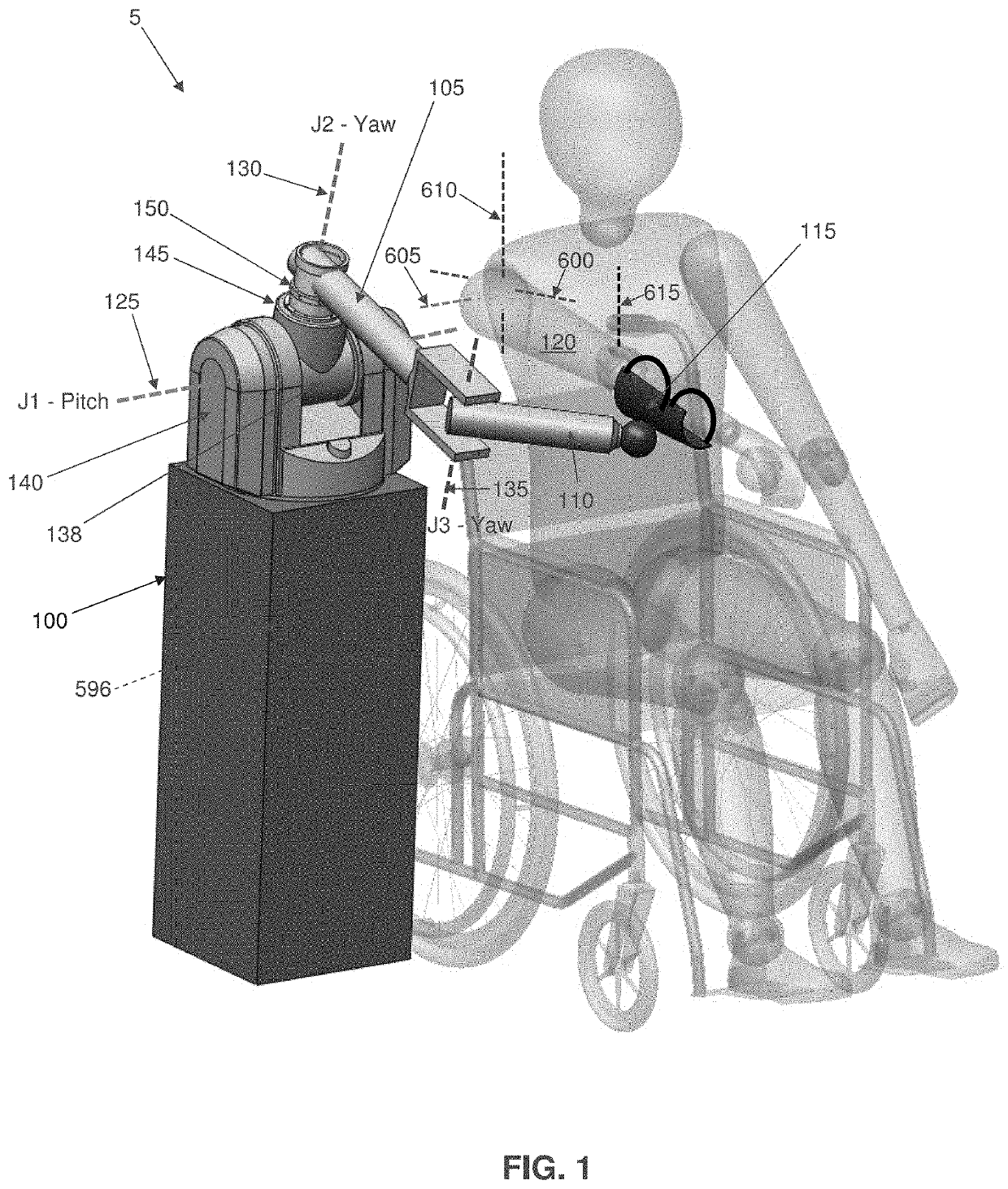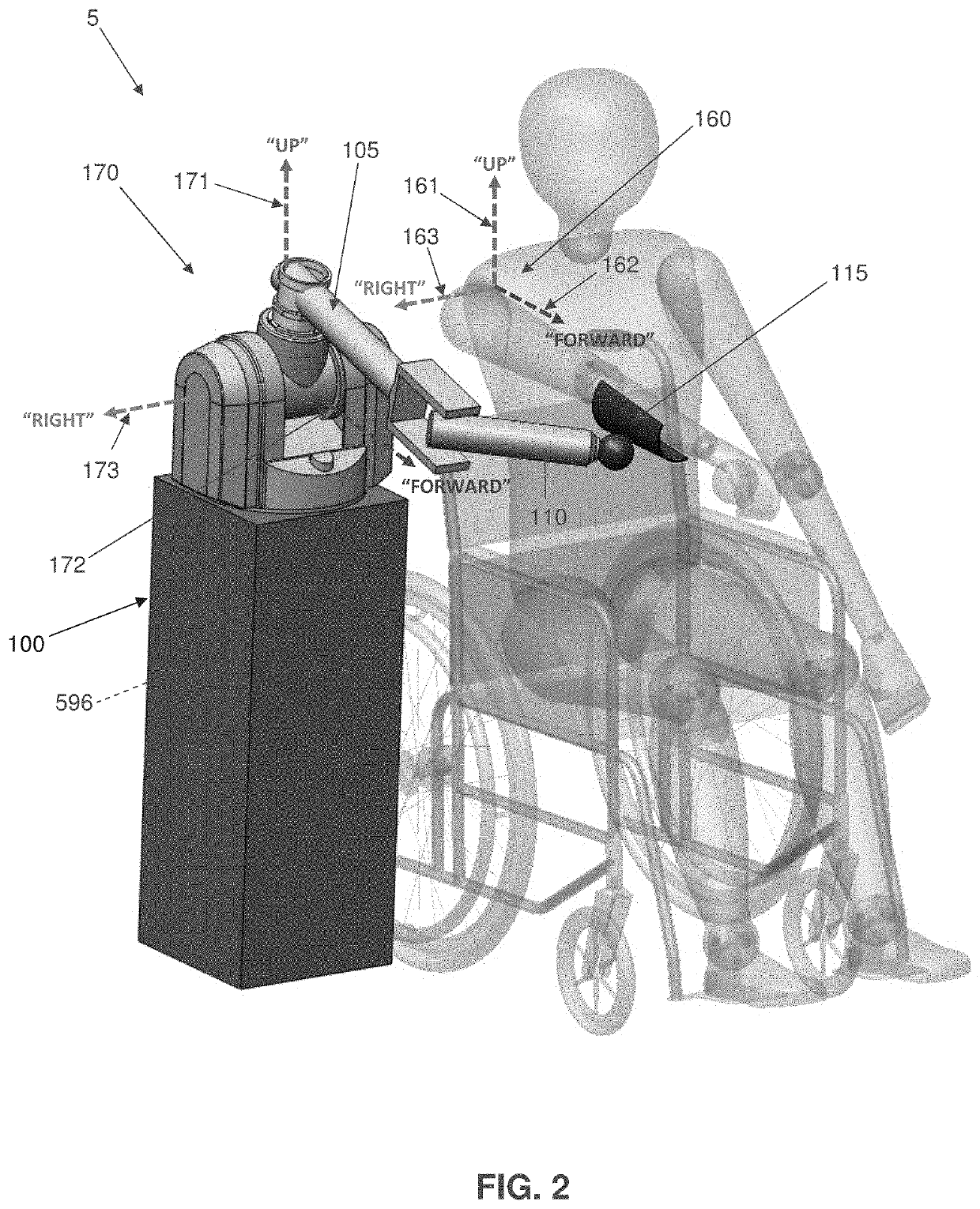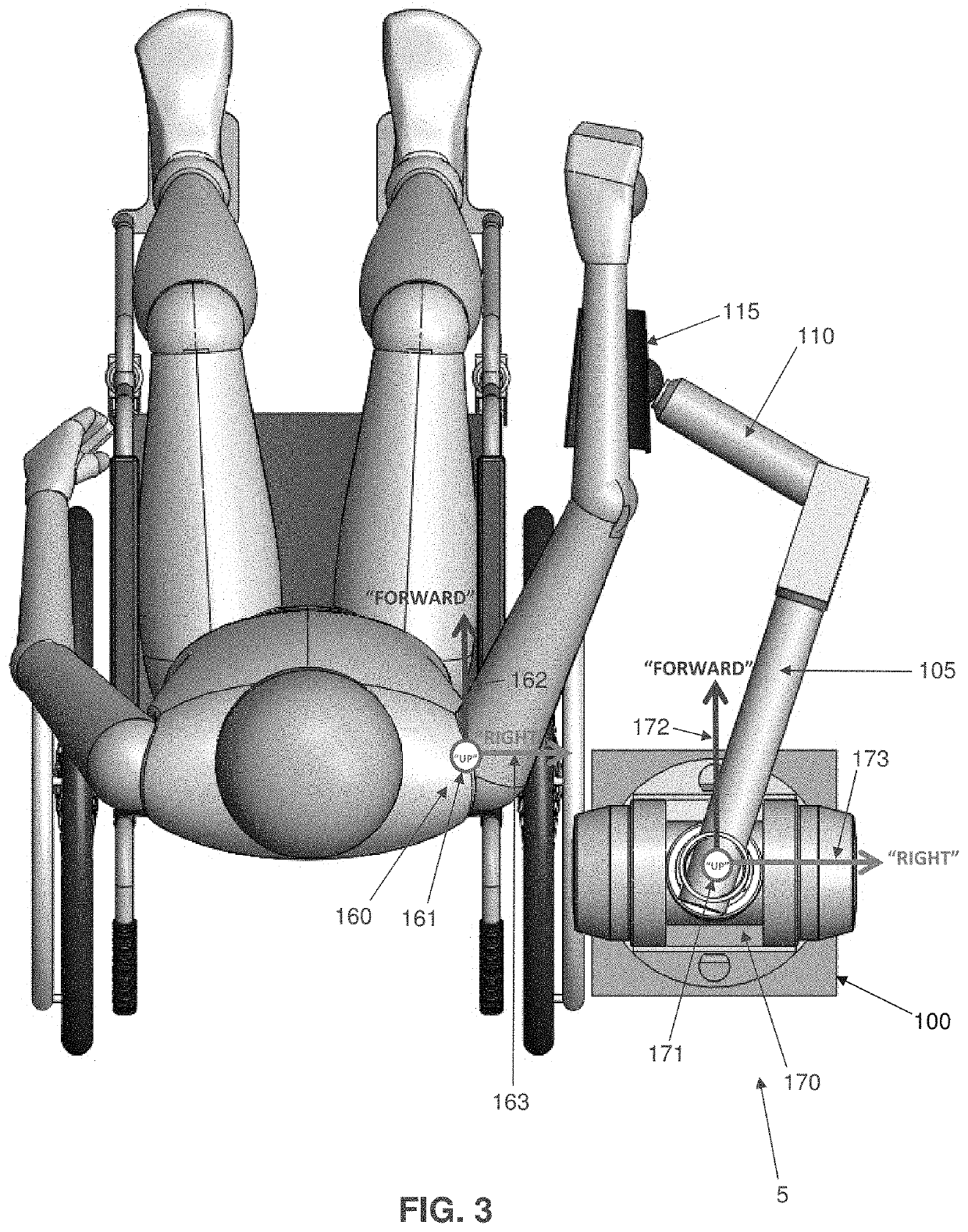Multi-active-axis, non-exoskeletal robotic rehabilitation device
a robotic rehabilitation and active-axis technology, applied in the field of neurological injuries rehabilitation devices, can solve the problems of reducing the number of rehabilitation tasks that the system can be used, reducing the number of rehabilitation tasks, and simply not being able to effectively implement human therapists, etc., to achieve the effect of improving the support ability of a high-dof exoskeleton system, reducing the footprint, and reducing the cost of rehabilitation
- Summary
- Abstract
- Description
- Claims
- Application Information
AI Technical Summary
Benefits of technology
Problems solved by technology
Method used
Image
Examples
Embodiment Construction
The Novel, Multi-Active-Axis Non-Exoskeletal Robotic Device in General
[0125]Looking first at FIG. 1, there is shown a novel multi-active-axis, non-exoskeletal robotic device 5 that is suitable for various robotic-assisted therapies and other applications. Robotic device 5 generally comprises a base 100, an inner link 105, an outer link 110, and a coupling element 115 for coupling outer link 110 to a patient, commonly to a limb of the patient (e.g., as shown in FIG. 1, the patient's arm 120).
[0126]The preferred embodiment shown in FIG. 1 has three degrees of freedom, although it will be appreciated by one skilled in the art that the present invention may comprise fewer or greater numbers of degrees of freedom. Three degrees of freedom theoretically provide the ability to access all positions in Cartesian space, subject to the kinematic limitations of the device, such as joint limits, link lengths, and transmission ranges. To produce those three degrees of freedom, robotic device 5 co...
PUM
 Login to View More
Login to View More Abstract
Description
Claims
Application Information
 Login to View More
Login to View More - R&D
- Intellectual Property
- Life Sciences
- Materials
- Tech Scout
- Unparalleled Data Quality
- Higher Quality Content
- 60% Fewer Hallucinations
Browse by: Latest US Patents, China's latest patents, Technical Efficacy Thesaurus, Application Domain, Technology Topic, Popular Technical Reports.
© 2025 PatSnap. All rights reserved.Legal|Privacy policy|Modern Slavery Act Transparency Statement|Sitemap|About US| Contact US: help@patsnap.com



